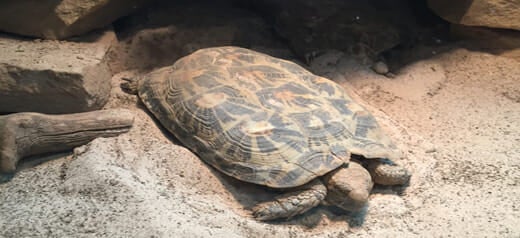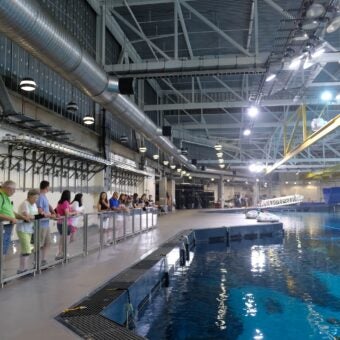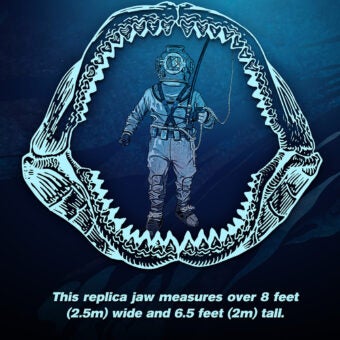-
Size
7 inches (17.8 cm) -
Diet
Vegetation and dry grasses -
Range
Tanzania and Kenya -
Habitat
Crevices on rocky hillsides
Physical Characteristics
- Coloration is brown and yellow.
- Shell is thin, flat and flexible.
- Shell bones have many openings, which allow the tortoise to be lighter and more agile to escape predators.
- Instead of retreating into its shell, the African pancake tortoise will flee danger. Its flexible shell allows it to hide in narrow crevices.
- Carapace length to 7 inches (17.8 cm).
Animal Fun Fact
The African tortoise’s shell hinges at the joints that make up the bony plates of its shell. This allows these tortoises to climb better than others.
Diet / Feeding
- Diet typically consists of vegetation and dry grasses.
Range / Habitat
- Occurs in northern and eastern Tanzania and southern Kenya and may also occur in Zimbabwe.
- Found in crevices on rocky hillsides and in scrub and savanna.
Reproduction & Growth
- The mating season is between January and February.
- Nesting appears to occur in July and August in their natural environment, but in human care, tortoises produce clutches year-round.
- Females dig holes in the soil and typically lay one egg, but they can lay several eggs over the course of one season.
- Incubation period of 4-6 months in human care.
Conservation Status
- “Vulnerable” on the IUCN Red List
Additional Information
- The collection of this animal for the pet trade is a major threat.
- Shell hinges at the scute joints, allowing the animal to climb better than others.
Sources
- http://www.arkive.org/pancake-tortoise/malacochersus-tornieri/






